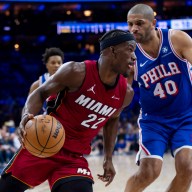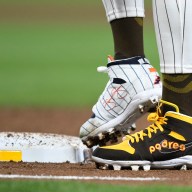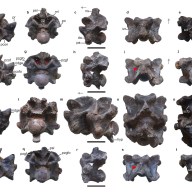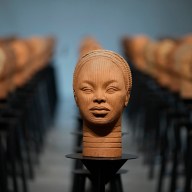Formula One technology is fine-tuned race by race — and the rest of the world benefits.
These innovations are not only used in sports cars, including the famous McLaren F1 and Ferrari’s models, but also in more everyday autos.
You might not hit Jarno Trulli-speeds in your Toyota Yaris, but it is likely to be faster, safer and more fuel-efficient as a result. Benefits include lighter stronger materials, safer tires, electric traction control, paddle gearshifts, ceramic disc brakes and aerodynamics that keep your family car stable and efficient as you drive down the motorway.
The 2009 F1 season’s key technology is KERS (Kinetic Energy Recovery System), a battery that stores energy generated by braking for later use. It’s set to filter down to mainstream cars as manufacturers race to hit carbon emissions targets.
But it’s not just road cars that benefit, F1 technology brings improvements to everyday life too.
Take the Trekinetic K2 wheelchair. Its creator Mike Spindle, a supplier of parts for F1 cars, was appalled by the average wheelchair’s crude and outdated design.
He created a new chair that, like a F1 car, was based around a strong, protective carbon-fibre monocoque shell shaped to the driver’s body to which the other components are attached, rather than the traditional chassis-based design.
Elsewhere doctors have learnt from the precise teamwork of F1 pit stops to help their teams transfer patients from surgery to intensive care, and troops in Iraq have been protected from landmines with the use of the carbon composite materials that allow F1 drivers to walk away from high-impact crashes.
3 things inspired by Formula One technology
Baby Pod II
This baby incubator used to transport seriously ill babies to hospital uses the same impact-resistant but ultra-lightweight materials that F1 cockpits are made of. Unlike heavy metal transporters, it’s safe but light enough to be carried by just one person and placed in cars and helicopters as well as ambulances.
Knee brace
Inspired by the hydraulic dampers used to absorb the energy of bumps in the track, it is used to protect the knees of U.S. Marines from impact as their inflatable boats hit the water at high speed.
Ovei wellbeing capsule
Ron Dennis, chairman and CEO of the McLaren F1 team personally tried out this immersive diagnostics tool made from F1 materials. Designers got help from McLaren F1 engineers to keep the Ovei cool using airflow engineered on racing-car principles.















